1. Boden SD, Davis DO, Dina TS, Patronas NJ, Wiesel SW. Abnormal magnetic-resonance scans of the lumbar spine in asymptomatic subjects: a prospective investigation. J Bone Joint Surg Am. 1990; 72:403–408. PMID:
2312537.

2. Saal JS, Franson RC, Dobrow R, Saal JA, White AH, Goldthwaite N. High levels of inflammatory phospholipase A2 activity in lumbar disc herniations. Spine (Phila Pa 1976). 1990; 15:674–678. PMID:
2218714.

3. Weinstein JN, Lurie JD, Tosteson TD, Skinner JS, Hanscom B, Tosteson AN, et al. Surgical vs nonoperative treatment for lumbar disk herniation: the Spine Patient Outcomes Research Trial (SPORT) observational cohort. JAMA. 2006; 296:2451–2459. PMID:
17119141.
4. Weinstein JN, Tosteson TD, Lurie JD, Tosteson AN, Hanscom B, Skinner JS, et al. Surgical vs nonoperative treatment for lumbar disk herniation: the Spine Patient Outcomes Research Trial (SPORT): a randomized trial. JAMA. 2006; 296:2441–2450. PMID:
17119140.
5. Lutz GE, Vad VB, Wisneski RJ. Fluoroscopic transforaminal lumbar epidural steroids: an outcome study. Arch Phys Med Rehabil. 1998; 79:1362–1366. PMID:
9821894.

6. Vad VB, Bhat AL, Lutz GE, Cammisa F. Transforaminal epidural steroid injections in lumbosacral radiculopathy: a prospective randomized study. Spine (Phila Pa 1976). 2002; 27:11–16. PMID:
11805628.
7. McCarron RF, Wimpee MW, Hudkins PG, Laros GS. The inflammatory effect of nucleus pulposus: a possible element in the pathogenesis of low-back pain. Spine (Phila Pa 1976). 1987; 12:760–764. PMID:
2961088.
8. Racz GB, Holubec JT. Lysis of adhesion in the epidural space. In : Racz GB, editor. Techniques of neurolysis. Boston: Kluwer Academic Publisher;1989. p. 57–72.
9. Racz GB, Heavner JE, Diede JH. Lysis of epidural adhesions utilizing the epidural approach. Waldman SD, Winnie AP. Interventional pain management. Philadelphia: Saunders;1996. p. 339–351.
10. Racz GB, Heavner JE, Trescot A. Percutaneous lysis of epidural adhesions: evidence for safety and efficacy. Pain Pract. 2008; 8:277–286. PMID:
18503627.
11. Manchikanti L, Rivera JJ, Pampati V, Damron KS, McManus CD, Brandon DE, et al. One day lumbar epidural adhesiolysis and hypertonic saline neurolysis in treatment of chronic low back pain: a randomized, double-blind trial. Pain Physician. 2004; 7:177–186. PMID:
16868590.
12. Manchikanti L, Pampati V, Fellows B, Rivera J, Beyer CD, Damron KS. Role of one day epidural adhesiolysis in management of chronic low back pain: a randomized clinical trial. Pain Physician. 2001; 4:153–166. PMID:
16902688.
13. Fenton DS, Czervionke LF. Image-guided spine intervention. Philadelphia: Saunders;2003.
14. Chansirinukor W, Maher CG, Latimer J, Hush J. Comparison of the functional rating index and the 18-item Roland-Morris Disability Questionnaire: responsiveness and reliability. Spine (Phila Pa 1976). 2005; 30:141–145. PMID:
15626994.

15. Grotle M, Brox JI, Vollestad NK. Functional status and disability questionnaires: what do they assess? A systematic review of back-specific outcome questionnaires. Spine (Phila Pa 1976). 2005; 30:130–140. PMID:
15626993.
16. Feise RJ, Michael Menke J. Functional rating index: a new valid and reliable instrument to measure the magnitude of clinical change in spinal conditions. Spine (Phila Pa 1976). 2001; 26:78–86. PMID:
11148650.
17. Veihelmann A, Devens C, Trouillier H, Birkenmaier C, Gerdesmeyer L, Refior HJ. Epidural neuroplasty versus physiotherapy to relieve pain in patients with sciatica: a prospective randomized blinded clinical trial. J Orthop Sci. 2006; 11:365–369. PMID:
16897200.

18. Heavner JE, Racz GB, Raj P. Percutaneous epidural neuroplasty: prospective evaluation of 0.9% NaCl versus 10% NaCl with or without hyaluronidase. Reg Anesth Pain Med. 1999; 24:202–207. PMID:
10338168.
19. LaRocca H, Macnab I. The laminectomy membrane. Studies in its evolution, characteristics, effects and prophylaxis in dogs. J Bone Joint Surg Br. 1974; 56:545–550. PMID:
4421702.
20. Burton CV. Lumbosacral arachnoiditis. Spine (Phila Pa 1976). 1978; 3:24–30. PMID:
148106.

21. Benner B, Ehni G. Spinal arachnoiditis: the postoperative variety in particular. Spine (Phila Pa 1976). 1978; 3:40–44. PMID:
644391.
22. Manchikanti L, Malla Y, Wargo BW, Cash KA, Pampati V, Fellows B. A prospective evaluation of complications of 10,000 fluoroscopically directed epidural injections. Pain Physician. 2012; 15:131–140. PMID:
22430650.
23. Woodward JL, Herring SA, Windsor RE, Dreyer SJ, Lester JP, Lagattuta FP. Epidural procedures in spine pain management. In : Lennard TA, editor. Physiatric procedures in clinical practice. Philadelphia: Hanley & Belfus;1995. p. 260–291.
24. Woodward JL, Weinstein SM. Epidural injections for the diagnosis and management of axial and radicular pain syndromes. Phys Med Rehabil Clin N Am. 1995; 6:691–714.

25. Lee HM, Weinstein JN, Meller ST, Hayashi N, Spratt KF, Gebhart GF. The role of steroids and their effects on phospholipase A2: an animal model of radiculopathy. Spine (Phila Pa 1976). 1998; 23:1191–1196. PMID:
9636970.
26. Kawakami M, Matsumoto T, Tamaki T. Roles of thromboxane A2 and leukotriene B4 in radicular pain induced by herniated nucleus pulposus. J Orthop Res. 2001; 19:472–477. PMID:
11398862.

27. Kirkaldy-Willis WH, Bernand TN. A comprehensive outline of treatment. In : Kirkaldy-Willis WH, Bernand TN, editors. Managing low back pain. New York: Churchill Livingstone;1983. p. 147–60.
28. Evans W. Intrasacral epidural injection in the treatment of sciatica. Lancet. 1930; 216:1225–1229.

29. Winkel D, Aufdemkampe G, Matthijs O, Meijer OG, Phelps V. Diagnosis and treatment of the spine. Gaithersburg: Aspen Publishers;1996.
30. Manchikanti L. Transforaminal lumbar epidural steroid injections. Pain Physician. 2000; 3:374–398. PMID:
16906179.

31. Hardman JG, Limbird LE, Molonoff PB, Ruddon RW, Gilman AG. Goodman & Gilman's the pharmacological basis of therapeutics. 9th ed. New York: McGraw-Hill;1996.




 PDF
PDF ePub
ePub Citation
Citation Print
Print


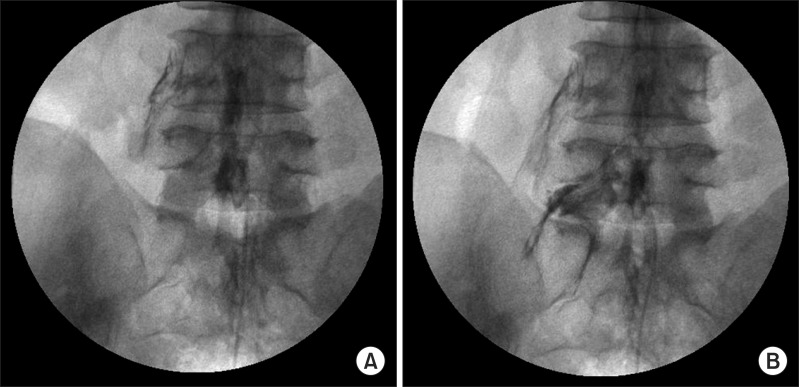
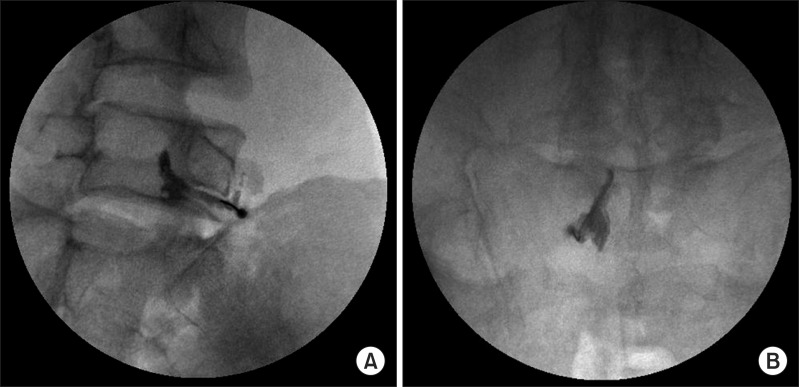
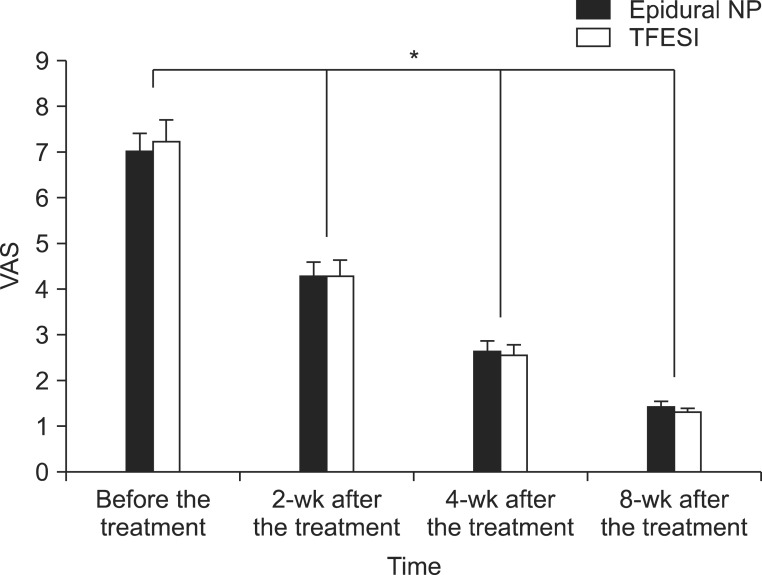
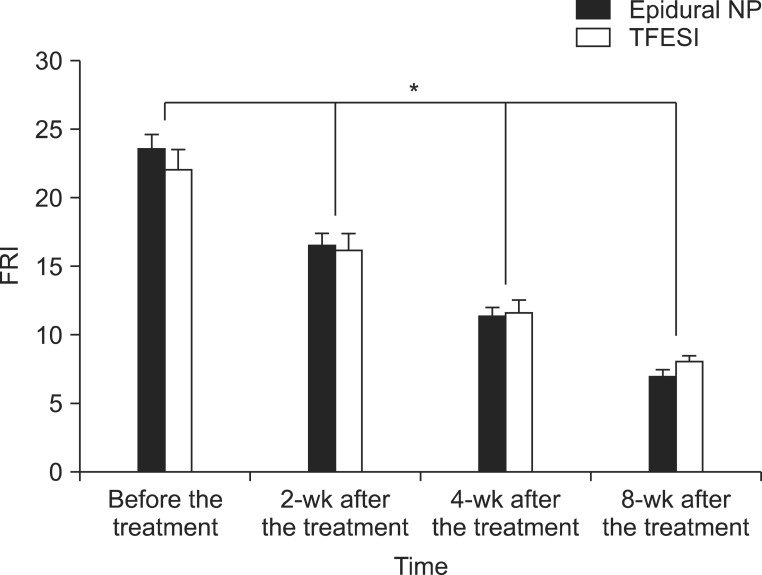
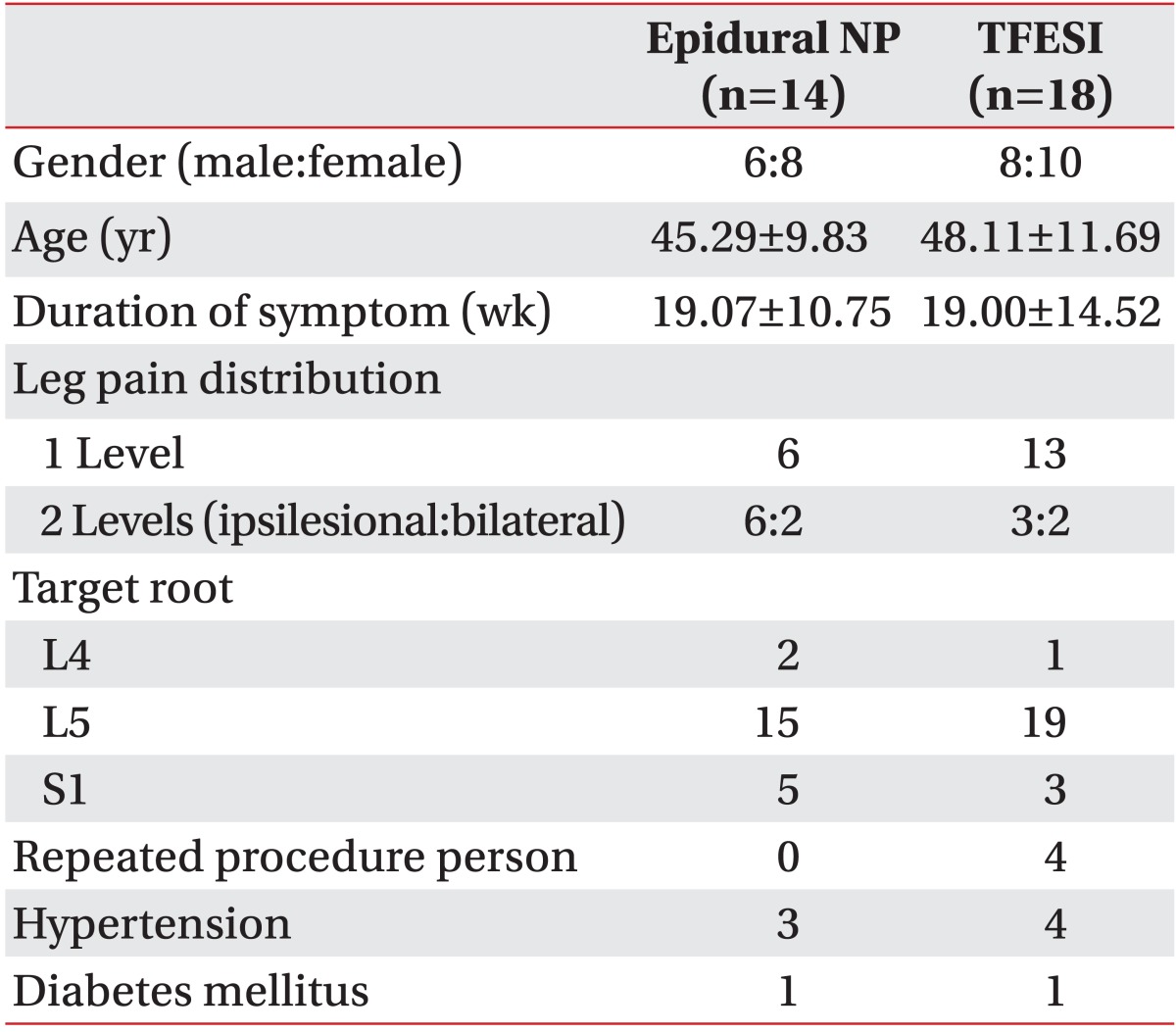
 XML Download
XML Download